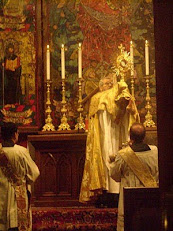In his "Notes on the Canticles", the Rev. John Henry Blunt (his essay reprinted in the Saint Dunstan's Plainsong Psalter) writes:
The Anthems instead of "Venite exultemus" on Easter Day represent the primitive custom of Easter morning, when the versicle "The Lord is risen," and the response "He is risen indeed," were the formal salutation between Christians. In the ancient rite of the English Church one of these anthems was said in procession before Mattins; and the service was retained in 1549.
In the Commentary on the American Prayer Book, the Rev. Marion J. Hatchett adds to this by writing:
The 1549 Prayer Book provided for the use of two "anthems" (Romans 6:9-11, two Alleluias, and 1 Corinthians 15:20-22 with one Alleluia) prior to Morning Prayer on Easter. A versicle and response and a collect followed. The structure of this preface, the first two verses of the first anthem, and a large part of the collect, derived from the order for the procession to the Easter sepulcher which had preceded the Sarum Mass for Easter Day.
A choral version of Pascha Nostrum from
the National Cathedral in Washington, D.C.















No comments:
Post a Comment